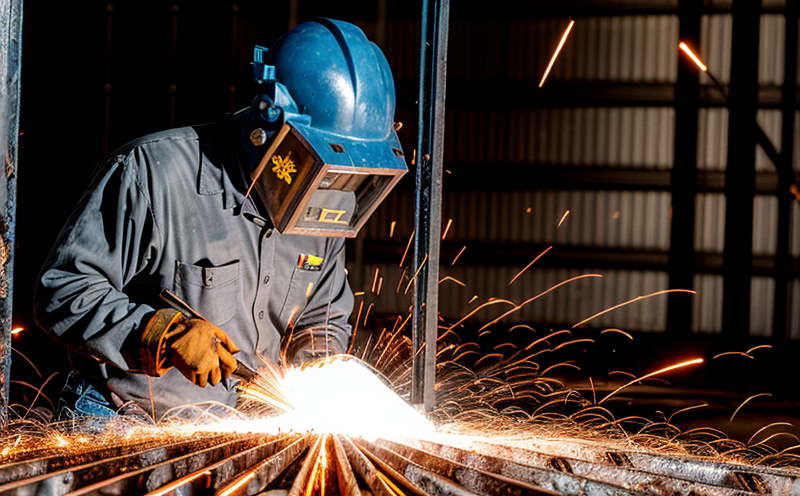Structural steel welding inspection
The inspection of structural steel welds is a critical process in ensuring safety and reliability within the construction industry. Welding, as an essential part of many structures, plays a vital role in ensuring that buildings, bridges, and other large-scale projects are safe for use.
Structural steel welding involves joining metal pieces through various methods such as gas metal arc welding (GMAW), submerged arc welding (SAW), or flux-cored arc welding (FCAW). The integrity of these welds directly impacts the overall structure's performance. Therefore, rigorous inspection procedures are necessary to ensure that all welds meet specified quality standards.
The inspection process typically includes multiple steps designed to detect any flaws or defects early in the production cycle. These can range from visual inspections using naked eye observation and magnifying glasses to more advanced techniques like radiographic testing (RT), ultrasonic testing (UT), and liquid penetrant inspection (MPI). Each method serves its unique purpose depending on the type of defect being sought after.
For instance, radiography helps identify internal discontinuities within thick sections where other methods might miss them. Ultrasonics are particularly useful for detecting small surface-breaking cracks or inclusions that could compromise structural integrity over time. Meanwhile, liquid penetrant testing excels at revealing surface-breaking flaws by highlighting their presence through dye contrast.
Compliance with international standards such as ISO 9712:2012 and ASME Section IX ensures consistency across different regions while maintaining high-quality benchmarks globally. These guidelines provide specific criteria for pre-weld preparation, qualification procedures, inspection requirements, acceptance levels, and record keeping.
Understanding the importance of proper inspections can also highlight how improper practices could lead to catastrophic failures leading to loss of life or extensive property damage. Regular maintenance checks coupled with stringent quality control measures help prevent such incidents by identifying potential issues before they become critical problems.
Scope and Methodology
The scope of structural steel welding inspections encompasses several key areas including pre-weld preparation, qualification processes, actual weld inspection techniques, acceptance criteria, documentation, and post-inspection reporting. Each step is critical to ensuring that the final product meets all necessary standards.
Pre-weld preparation involves cleaning the area around the weld joint thoroughly before welding begins. This ensures there are no contaminants affecting the quality of the weld itself. Next comes the qualification process which verifies whether operators possess the skills required for performing specific types of welds safely and effectively. This might involve demonstrating proficiency through practice tests under controlled conditions.
- Visual Inspection: The most basic form of inspection, it involves examining the exterior appearance of the weld using only human eyesight supported by low-power magnification devices if needed.
- Radiographic Testing (RT): Utilizing X-rays or gamma rays to produce images highlighting any internal defects within the weld.
- Ultrasonic Testing (UT): Sending sound waves into the material and analyzing echoes returned from interfaces between different materials or flaws inside the component.
- Liquid Penetrant Inspection (MPI): Applying a visible dye to the surface of the part, allowing it to seep into any open cracks, then wiping away excess fluid before applying developer. The developer draws out trapped penetrant under tension creating an indication where there was originally a flaw.
Quality and Reliability Assurance
Ensuring quality through reliable methods is paramount in maintaining standards within the construction sector. Quality assurance (QA) plays an integral role by implementing systematic processes aimed at preventing defects from occurring during manufacturing stages.
A robust QA program includes continuous training for employees involved directly with welding operations, regular calibration of equipment used throughout inspections, and adherence to strict environmental controls during both production activities and testing procedures. By doing so, organizations demonstrate commitment towards delivering products that consistently meet or exceed expectations set forth by relevant regulations and industry norms.
Reliability assurance focuses on maintaining consistent performance levels over extended periods through rigorous monitoring efforts. This includes tracking key performance indicators (KPIs) related to defect rates, turnaround times for inspections, customer satisfaction scores, etc., allowing managers to make informed decisions about process improvements whenever necessary.
The implementation of advanced technologies like automated inspection systems enhances both efficiency and accuracy compared to manual methods. These systems utilize sophisticated algorithms capable of analyzing vast amounts of data quickly, providing detailed reports that highlight areas requiring attention promptly. Such tools not only reduce human error but also enable quicker responses when issues arise during construction projects.
Competitive Advantage and Market Impact
- Innovation Leadership: By staying ahead of emerging trends in welding technology, companies can offer superior solutions that enhance safety standards and reduce downtime. This innovation drives demand for their services among clients seeking cutting-edge practices.
- Increased Client Confidence: Consistently meeting or exceeding industry expectations fosters trust between service providers and customers. Clients are more likely to choose reliable partners who consistently deliver high-quality results.
- Enhanced Reputation: A strong reputation built on reliability attracts new business opportunities, which in turn strengthens market position. Word-of-mouth recommendations further reinforce this positive image.
- Economic Growth: Investing in quality assurance initiatives contributes positively to local economies by creating jobs and stimulating growth within related industries such as manufacturing and engineering services.





